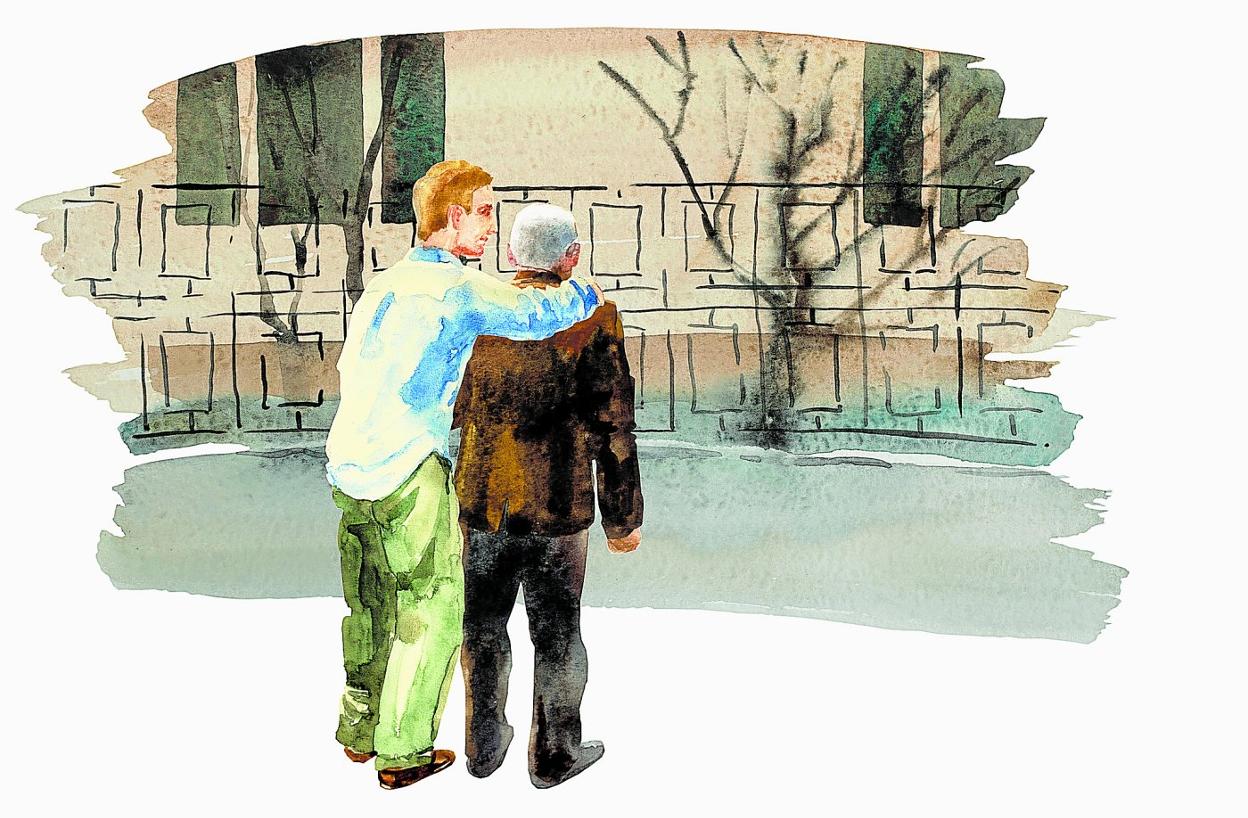Learning how not to fall
Study ·
A Japanese team develops a pioneering programme to reduce accidentsFERMÍN APEZTEGUIA
Friday, 2 December 2022, 13:05
Falls are one of the biggest concerns for the elderly population. For those who are getting on in years, a sudden loss of balance can spell the end of independence. Some studies carried out in Spain suggest that 40 per cent of older people who break their hip after tripping over never walk again.
And this happens fairly often. Japanese researchers decided to find a solution for this problem they say has never been adequately studied. A study carried out at the University of Osaka has shown the effectiveness of simpler solutions, like training. Teaching older patients how to avoid falls in their everyday surroundings drastically reduces the rate of accidents.
The Japanese method is a pioneering solution, but it is not the only country to adopt this method. In some Spanish cities, similar projects have been carried out. However they are few and far between, says Luis Pérez Castrillón, internal medicine specialist at the Río Hortega de Valladolid hospital and member of the Spanish internal medicine society.
"We tend to turn to curative medicine and short-term solutions, but in order to see results from fall management strategies, time is required," he says.
Focusing on the home
The Japanese programme started after it was shown that in the months after being discharged from hospital, there were high levels of falls among older patients.
This trend, the authors of the study say, is particularly noticeable among patients who were in acute care hospitals where they treat short-term illnesses. Accidents are more likely to happen at home than in the street: in the living room, bedroom, kitchen or bathroom.
The study was carried out in the Faculty of Rehabilitation Sciences at the University of Osaka, with 60 patients who suffered from different orthopaedic conditions.
All of them were over the age of 65, and had a history of falls. The participants were divided into two groups.
In both groups they were trained to do exercises for fall prevention, which aim to improve balance, make muscles stronger and more flexible, and gradually increase the duration of physical activity.
Half of them were also given additional training which was more practical. Using their homes as a basis for this training, they were individually instructed to navigate the potential hazards in their dwellings and make use of furniture to avoid big falls and find support to soften the blow.
On finishing the course, the patients were discharged, and once in their homes were monitored over the following six months, taking note of everything that happened.
Three simple solutions
Nearly one in ten patients in the group (7.7%) who did not receive the personalised training ended up falling in the two months after their hospital discharge.
In the intervention group, there were no falls. In the following month, the trained patients had no accidents, and in the last few months, there were hardly any significant differences.
"In an ageing society we need prevention methods for falls that can be used in hospitals with a high patient rotation," said Tetsuya Ueda, the professor who led the investigation.
"The use of floor plans to help older people after being discharged shows the effectiveness of prevention methods," he highlighted.
The critical age for having an accident starts at 70. There are three important, but simple factors for fall prevention according to Pérez Castrillón.
Aside from removing obstacles in the home, avoiding medication that causes drowsiness and treating patients who have cataracts are also important. "They are simple things which can resolve many problems," the specialist says.
Breaking a hip
Women and those who lead more sedentary lives more likely to break a hip Breaking a hip is one of the biggest risks when someone falls, especially if they are old. When a hip fracture occurs it severely impairs the ability to walk. A fall is the main cause of the problem, however there are other factors that increase the risk of breaking a hip. A sedentary lifestyle lacking in exercise and a healthy balanced diet are other key factors which contribute to an increased risk. Genetics and being a woman also play a role. There are three times as many women as men who break their hips.
